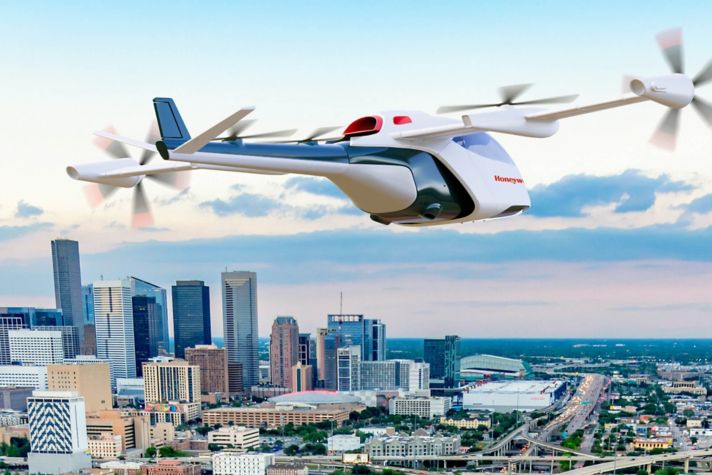-
Global
-
Africa
-
Asia Pacific
-
Europe
-
Latin America
-
Middle East
-
North America
- |
- BUSINESSES
- |
- Contact
- |
-
Global
-
Africa
-
Asia Pacific
-
Europe
-
Latin America
-
Middle East
-
North America
- |
- BUSINESSES
- |
- Contact
- |
You are browsing the product catalog for
You are viewing the overview and resources for
- News
- How Close Are We to Flying in Air Taxis?
How Close Are We to Flying in Air Taxis?
They’ll be here sooner than you might think
June 7, 2019
Rolly McFarlin lives in the Atlanta area and commutes about 40 miles, or 65 kilometers, to the Honeywell office in Norcross, Georgia.
“Depending on the time of day I go, it can take me 45 minutes – or it can take me two hours – to get there,” said Rolly, who works on our aviation sales team.
Commutes like his will one day be made easier and faster with air taxis.
When? Sooner than you might think.
Our experts in urban air mobility, or UAM, predict that they could begin flying with limited service in select large metropolitan cities around 2023-2025.
They could be common by 2040, according to a report by Morgan Stanley.
Instead of sitting in a car for hours, people will be able to be more productive at work and spend more time with their families.
“It’s all about time and the value of time,” Rolly said.
Much of the technology for air taxis is already here, said Sean Byrnes, another of our UAM experts.
“These things are flying,” said Sean, who manages our actuation and motion control products.
What’s actuation? Think: The flaps that move on aircraft wings or the parts that open and close valves on jet engines. Air taxis will require actuators to help move rotors and flaps, open and close doors or raise and lower landing gear, he said.
Sean has seen prototypes and test vehicles and said many of them look like drones — but bigger.
In addition to convenience, air taxis will help the planet, said Bryan Wood, who oversees propulsion for urban air mobility.
They will rely on hybrid and electric propulsion systems, which produce fewer carbon emissions than traditional engines.
“We’re talking about flying aircraft that will be quieter, cheaper, more efficient and less noisy than aircraft that are currently being flown today,” Bryan said.
Here’s what our experts say must happen before we see air taxis flying in the skis:
- Certification requirements: Top regulators like the U.S. Federal Aviation Administration and the European Aviation Safety Agency will have to set requirements for the vehicles.
- Infrastructure: More helipads and heliports will be needed for the vehicles to take off and land, and a new airspace management system will need to insure safety.
- Public awareness: The vehicles will need to prove to the public they are safe to fly in and over public areas.
- More pilots, driverless technology: Experts predict that hundreds of thousands of flying taxi vehicles will one day be in service, requiring more pilots. Eventually, driverless technology could operate the vehicles.
- Revised supply chain: The aerospace industry will need to accommodate more aircraft being built.
Our experts agree air taxis are the future of transportation.
“We’re working on these developing technologies,” Sean said. “These things that 10 years ago were literally just a figment of someone’s imagination.”
Copyright © 2025 Honeywell International Inc.




